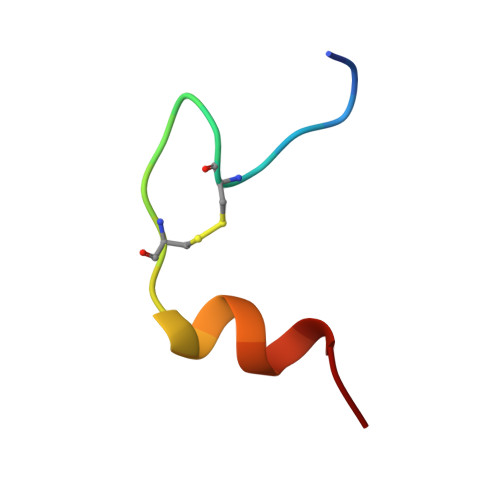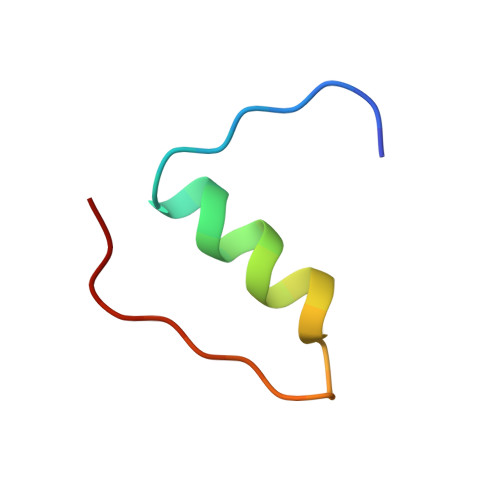Mechanism of insulin chain combination. Asymmetric roles of A-chain alpha-helices in disulfide pairing
Hua, Q.X., Chu, Y.C., Jia, W., Phillips, N.F., Wang, R.Y., Katsoyannis, P.G., Weiss, M.A.(2002) J Biol Chem 277: 43443-43453
- PubMed: 12196530
- DOI: https://doi.org/10.1074/jbc.M206107200
- Primary Citation of Related Structures:
1LKQ - PubMed Abstract:
The A and B chains of insulin combine to form native disulfide bridges without detectable isomers. The fidelity of chain combination thus recapitulates the folding of proinsulin, a precursor protein in which the two chains are tethered by a disordered connecting peptide. We have recently shown that chain combination is blocked by seemingly conservative substitutions in the C-terminal alpha-helix of the A chain. Such analogs, once formed, nevertheless retain high biological activity. By contrast, we demonstrate here that chain combination is robust to non-conservative substitutions in the N-terminal alpha-helix. Introduction of multiple glycine substitutions into the N-terminal segment of the A chain (residues A1-A5) yields analogs that are less stable than native insulin and essentially without biological activity. (1)H NMR studies of a representative analog lacking invariant side chains Ile(A2) and Val(A3) (A chain sequence GGGEQCCTSICSLYQLENYCN; substitutions are italicized and cysteines are underlined) demonstrate local unfolding of the A1-A5 segment in an otherwise native-like structure. That this and related partial folds retain efficient disulfide pairing suggests that the native N-terminal alpha-helix does not participate in the transition state of the reaction. Implications for the hierarchical folding mechanisms of proinsulin and insulin-like growth factors are discussed.
Organizational Affiliation:
Department of Biochemistry, Case Western Reserve School of Medicine, Cleveland, Ohio 44106-4935, USA.















